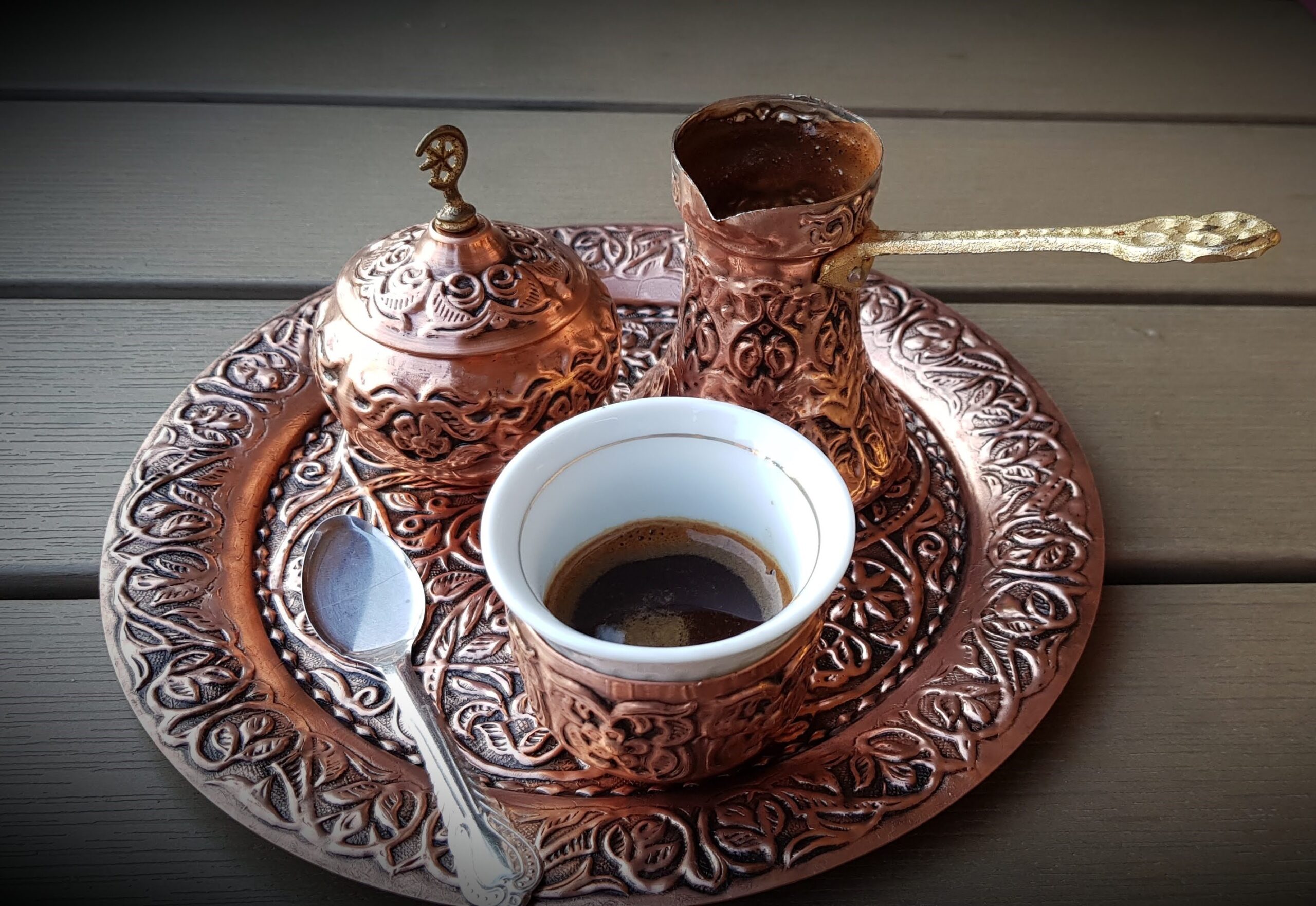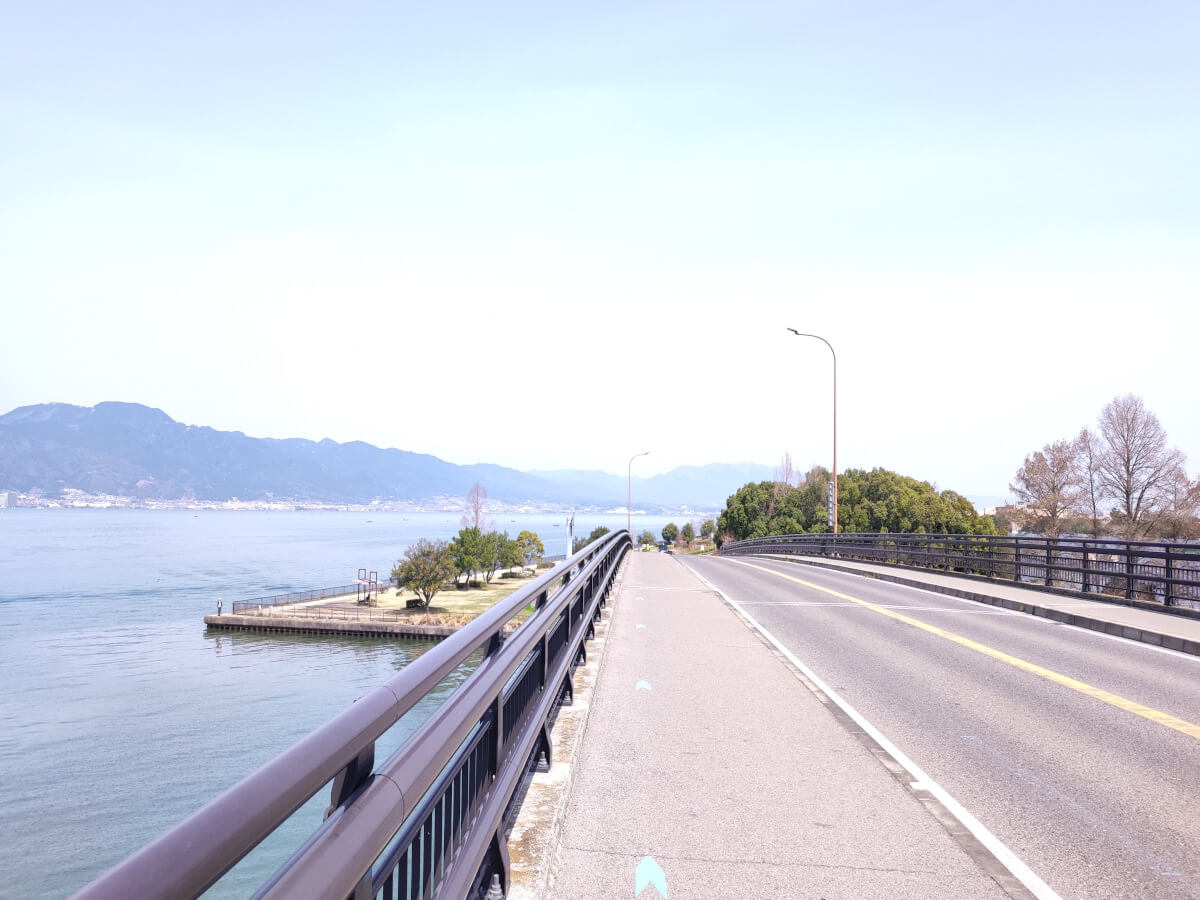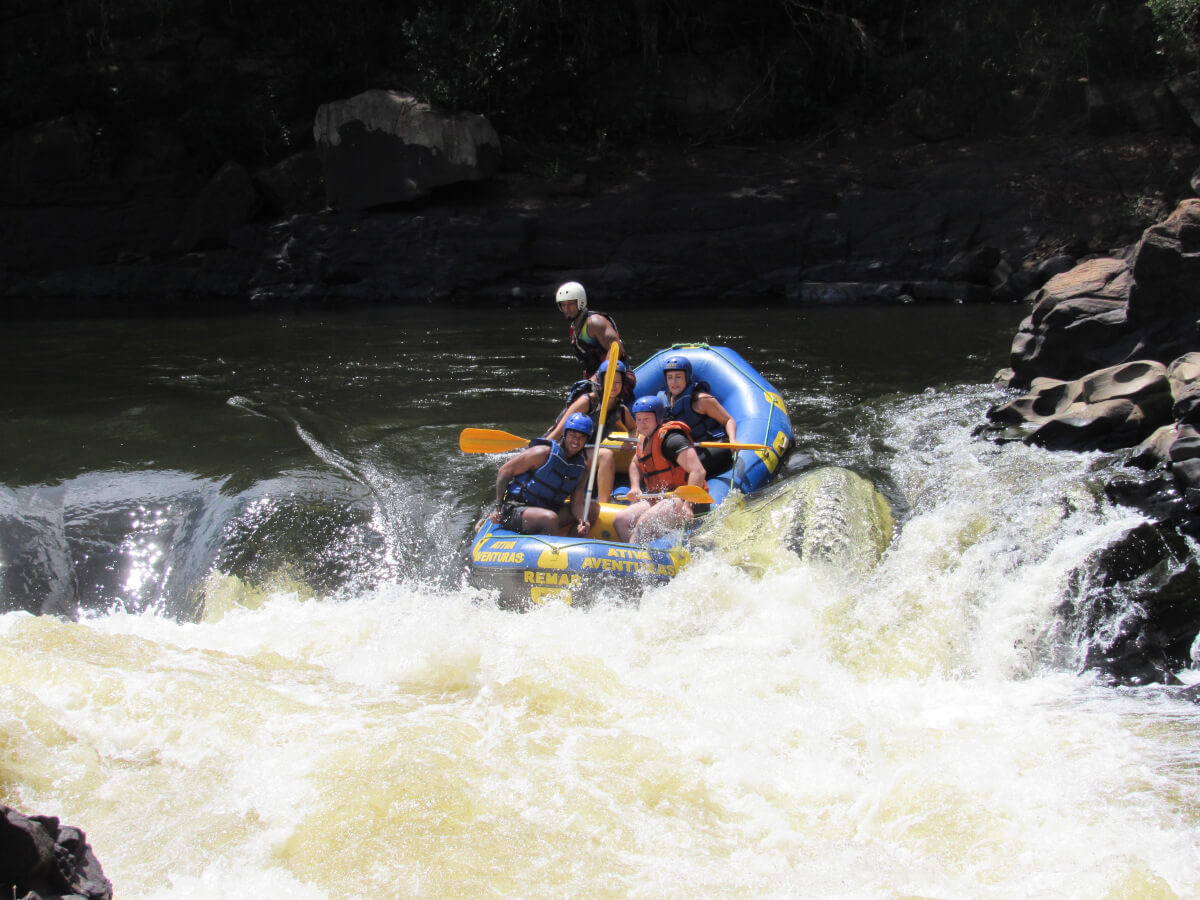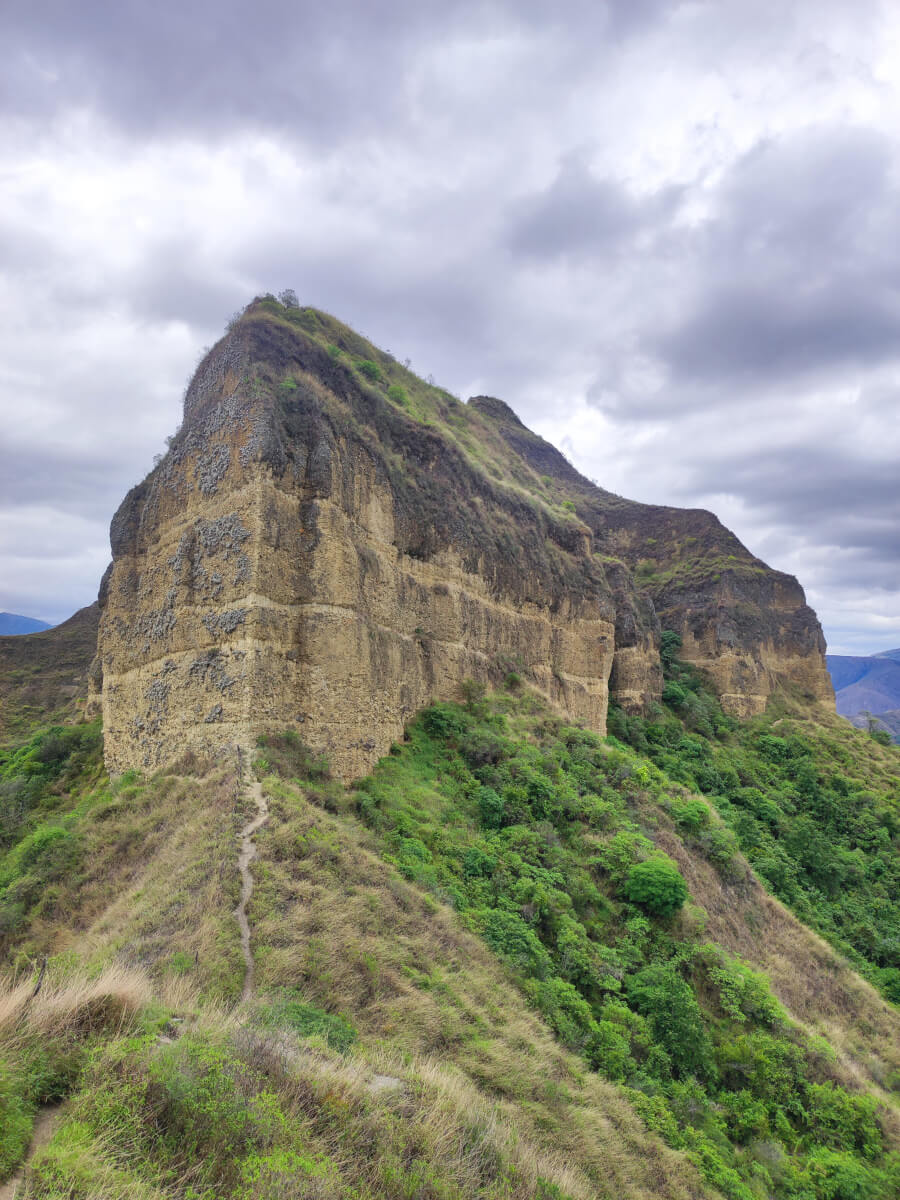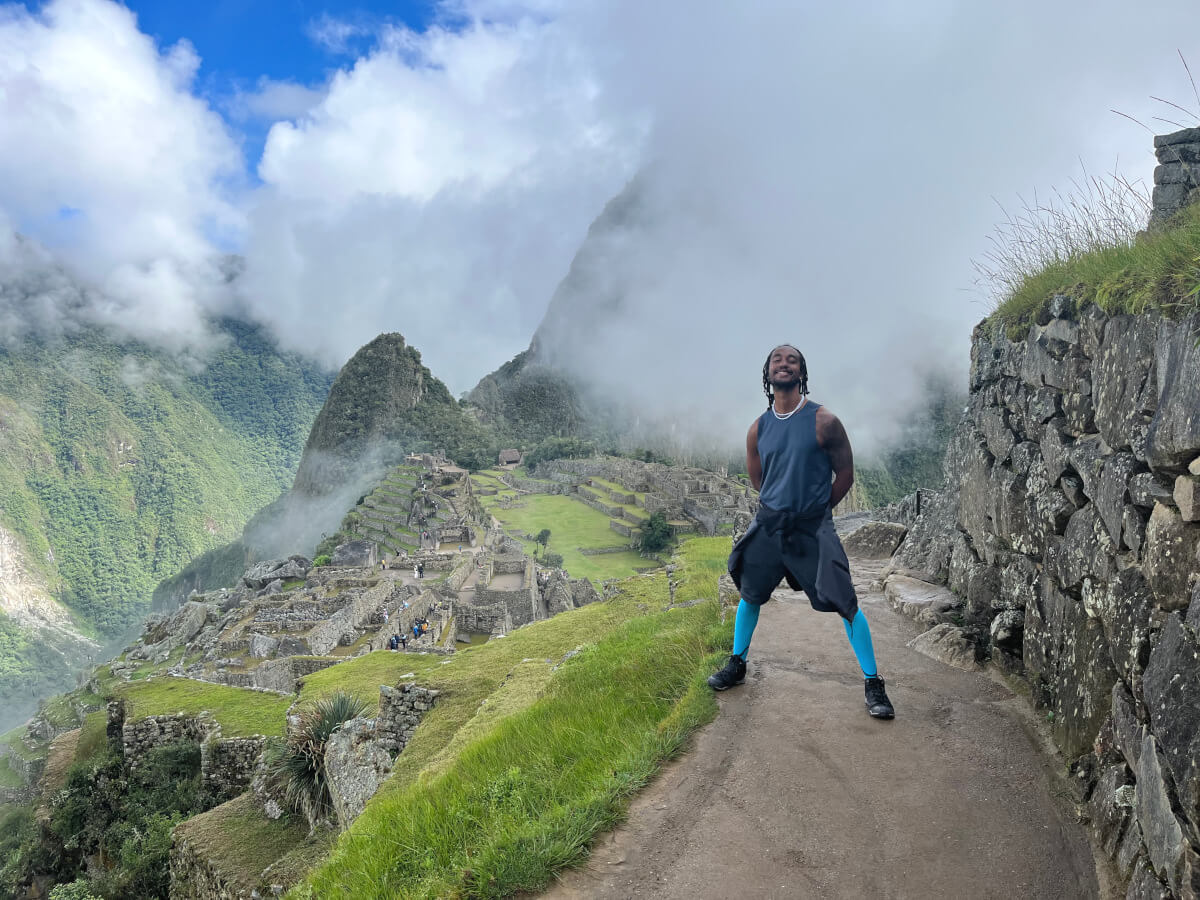Lobitos is a small town located in the northwestern region of Peru. Its history dates back to the early 1900s, when the discovery of petroleum in the region led to the establishment of several oil companies in the area. In this blog post, we will dive into the history of Lobitos, the arrival of its vibrant surf scene, the incredible artsy environment, and the prospects for the future.
Besides the surf scene, many activities are happening in Lobitos; projects and NGOs are helping to work on specific causes, also the vibes to help those looking to flourish their artistic side. It’s an enchanting town that keeps its magic strong despite a few challenges we will discuss.
If you want to know more about Peru’s unique and magical town, fast your seatbelts and stay here as we explore its charm.
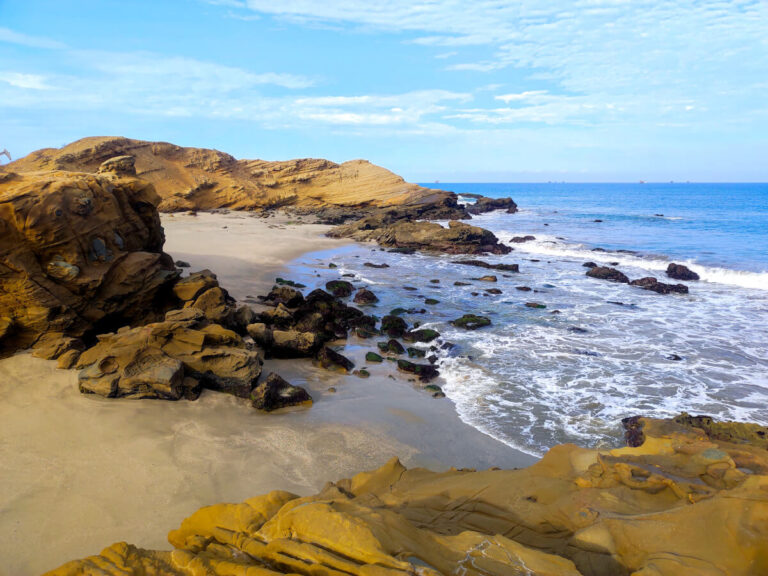
Table of Contents
History of Lobitos
If you like history, stay with me in this section. You will learn facts about Lobito’s history and how everything started until now when the town became one of Peru’s most important surf hot spots. If you are not interested in learning about its history, click here to jump to the next section and read about the main activities.
The Oil boom
The oil boom in Lobitos began in the early 20th century, marked by the discovery of significant oil reserves along the northern coast of Peru. The town experienced a surge in economic activity, attracting multinational oil companies that sought to capitalize on the newfound wealth beneath the earth. This period of prosperity reached its peak during the 1920s and 1930s.
The oil industry brought an influx of workers, transforming Lobitos from a fishing village into a vibrant town with a diverse population. Infrastructure developed rapidly to support the extraction and transportation of oil, and the once-sleepy coastal community became a key player in the Peruvian oil production scene.
The town and its surrounding territory functioned as a small British/American colony, officially leased from the Peruvian Government. This arrangement established essential infrastructure to support oil production, including a pier, desalinization plants, electricity facilities, and roads. Another reason was to accommodate the needs of immigrant workers settling in the community.
Historical records also verify that 1930 the Prince of Wales and Prince George visited Lobitos during their journey to the World Expo in Buenos Aires, Argentina.
Lobitos suddenly became so important that the first cinema in the entire South American continent was established there. Unfortunately, it doesn’t exist anymore, since it was dismantled many years ago.
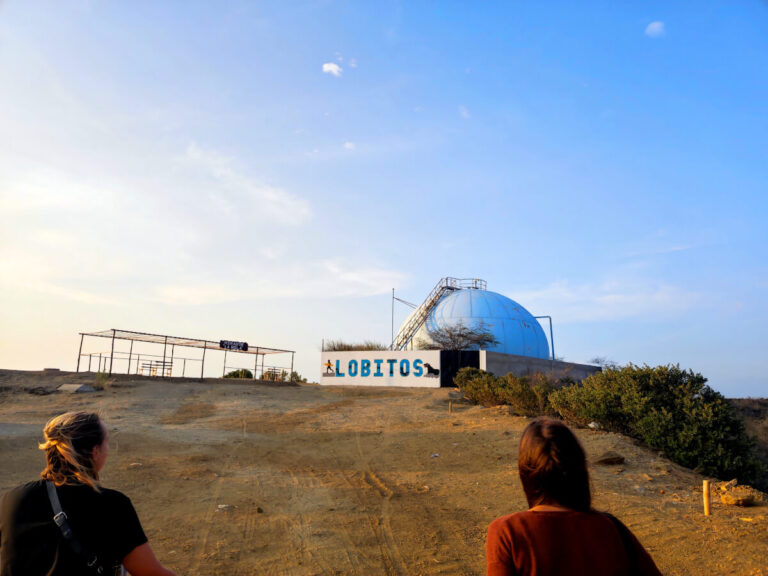
The military coup
However, the oil industry in Lobitos encountered a downturn in the mid-20th century. The military coup in Peru in 1968 marked the conclusion of the town’s prosperous era. Within six days of assuming control, all oilfields were nationalized, leading to the expulsion of foreign operators and the establishment of Petro-Peru.
Recognizing the strategic significance of Lobitos due to its proximity to the Talara air base, which is crucial for air support and communication, the military mobilized soldiers to the area. Following a minor conflict with Ecuador over bordering rainforest territories in the 1990s, a peace agreement was established in 1999.
Both countries committed to reducing military assets along the newly recognized border as part of the agreement. The Lobitos military base, initially intended for decommissioning as a transitional military facility, remains operational today, with minimal presence to deter any unauthorized occupation of military land. Reduced military operations led to a proportional downsizing of local infrastructure and physical structures in Lobitos.

Post-military period
The substantial military presence in Lobitos ceased in 2005, opening the door for adventurous surfers from across Peru to explore the region. This marked the start of surf tourism, which has gained momentum over the years. Despite the challenges, Lobitos managed to survive and slowly began reinventing itself as a tourist destination. The town’s beautiful beaches attracted visitors from all over the world.
By 2008, Lobitos hosted an international competition as part of the ASP Woman’s World Tour, solidifying its reputation as a destination for surf enthusiasts.
Local initiatives and community-driven projects have played a crucial role in revitalizing Lobitos, emphasizing sustainable practices and preserving the town’s natural beauty. The abandoned structures from the oil era have become part of the town’s historical fabric, complementing the arts scene.
As the town looks to the future, there has been a renewed interest in balancing economic development with environmental conservation. Lobitos now stands as a testament to resilience and adaptability, with the surf and arts scene playing a pivotal role in shaping the town’s modern identity.
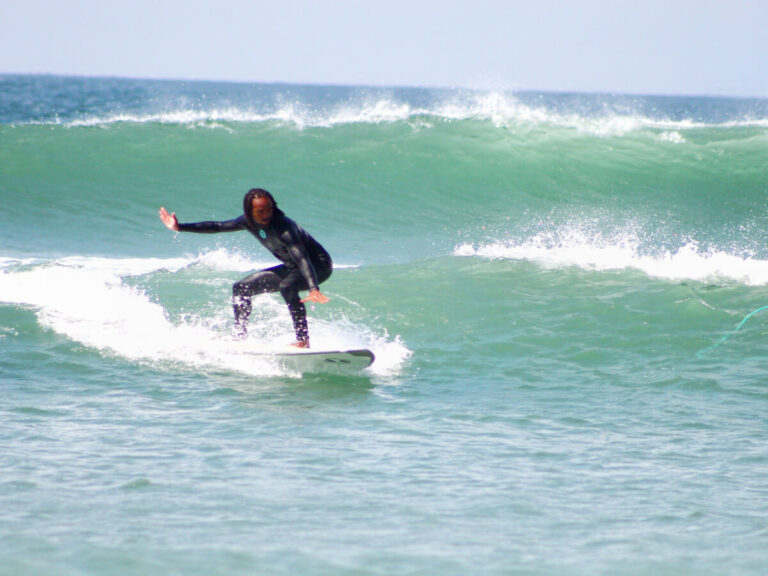
Unlock Cusco's Ecotourism wonders with my guide
Ready to explore Cusco’s vibrant ecotourism scene? My travel guide offers everything you need for an unforgettable journey. Don’t miss this chance to travel sustainably!
Activities in Lobitos
The surf scene is the main activity in Lobitos. However, with more and more people going to the town, different activities started being developed.
The town’s art and music scene increased, with many people developing their crafts and bringing their talents. El Cuartel and Los Muelles are hostels that constantly give locals opportunities to show their talents to the guests.
Pia and Vanessa are twin sisters who have been living in Lobitos for a few years. They are both working on exciting projects in the town. Pia works in the El Rancho Lobitos, an equine therapy project that started six months ago. Vanessa began the Living Lobitos project, where the goal is to help people get to know Lobitos as a local.
Waves Lobitos is a Nonprofit Organization that aims to make surfing more accessible for locals where the surf scene happens.
Where to surf?
Yeah, let’s talk about the main activity in Lobitos, Peru. There are several beaches to explore and surf spots to check out. There is space for everybody to surf. Sometimes, Punta can be crowded when the tide is high, but it is still less crowded than I have seen in Mancora.
Piscinas
Playa Piscinas gets its name, “Piscinas,” which translates to “pools” in English, from the natural rock formations that create pools along the shore. These pools offer a unique contrast to the powerful and consistent waves. The rolling swells and offshore winds create ideal conditions for experienced surfers looking for a challenge and beginners eager to catch their first waves.
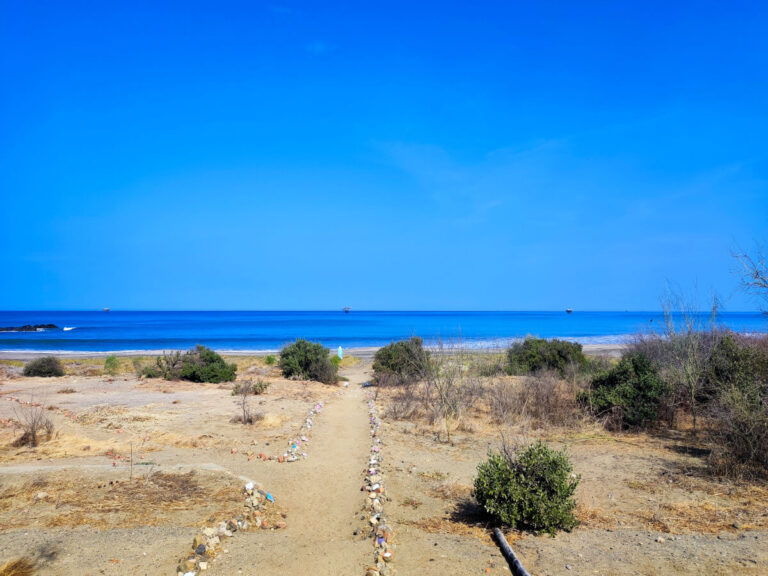
Punta
Punta Beach stands out with its panoramic views, golden sands, and exhilarating waves. The beach derives its name from the prominent rocky point, or “punta” in Spanish, that extends into the ocean. This geological feature not only adds a distinctive character to the landscape but also plays a crucial role in shaping the quality of the waves.
Punta Beach offers various surf breaks suitable for multiple skill levels. The waves here are renowned for their long rides and impressive consistency, contributing to Lobitos’ reputation as a premier surfing destination.
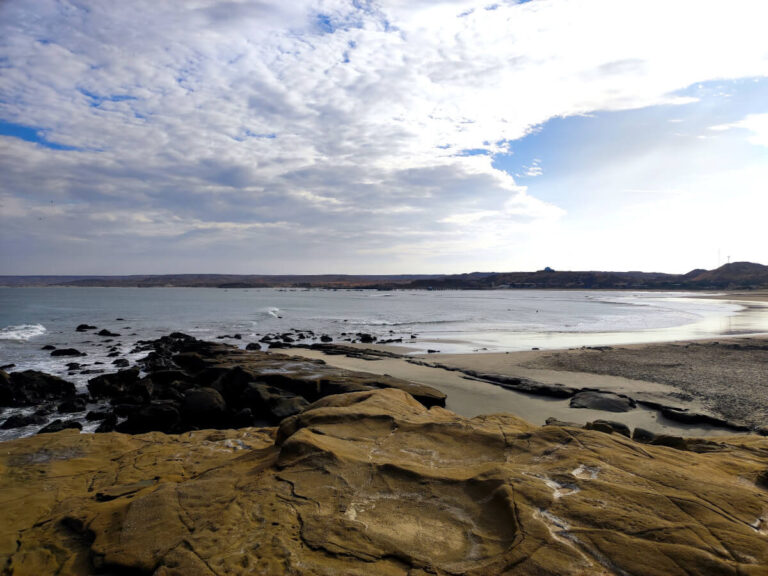
Baterias
Baterías Beach is named after the historic military batteries that once stood guard along its shores and presents a unique mix of surfing attractions and scenic peacefulness. The seabed’s topography and the beach’s strategic positioning create optimal conditions for challenging surf breaks, making it a coveted destination for those searching for thrilling rides.
What sets Baterías Beach apart is its surfing credentials and the captivating coastal landscape surrounding it. The remnants of the old military batteries add a touch of history to the scene, creating a unique position of nature and historical intrigue.
Beyond the surf, Baterías offers a nice escape into nature. The golden sands, formed by cliffs and natural rock formations, stretch along the coastline and enhance the sense of tranquility. And that makes it an ideal spot for those looking to connect with the beauty of the Pacific.
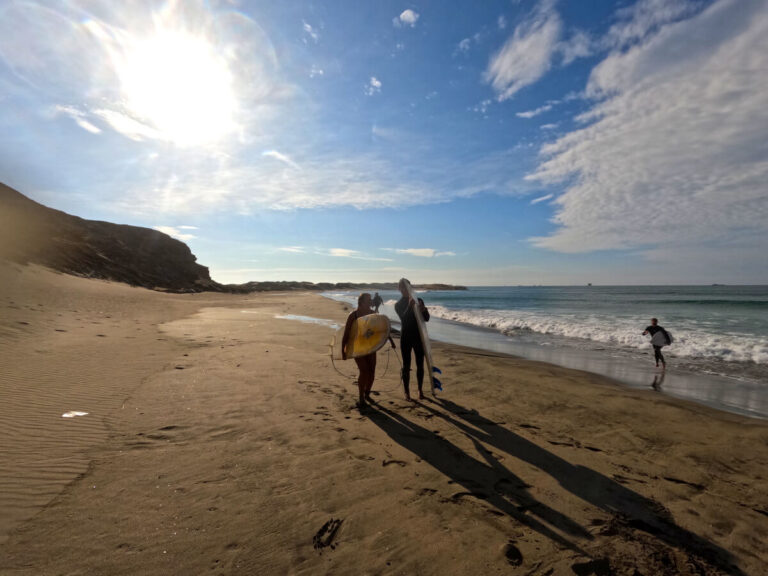
What makes Lobitos so special?
Lobitos has a unique charm that sets it apart from other places. This sentence is something you will hear often after talking to people who are living there. But this statement brings two questions: What are they talking about? What’s so special about Lobitos?
After spending two weeks there, I understood what they were talking about. Lobitos is a town that suits people well with three different intentions: Those interested in surfing, those looking for an escape from the busy city lifestyle, and those looking for an opportunity to develop or discover their artistic and creative side.
The surf scene is excellent!!! As mentioned in the previous sections, surfers of all levels will be pleased in Lobitos. The experience will be better if you have your surfboard; prices in Lobitos are higher than in Mancora and Huanchaco.
Lobitos is very isolated; the closest city is Talara, which takes a 30-minute drive to reach. It’s so peaceful and slow that those looking for an escape from the busy city will feel very happy staying there. The chance to connect with nature on the coast, swimming, or chill at the beach is the type of rest that many are looking for. So, you can consider Lobitos as a safe zone to escape.
Another fact that makes Lobitos exceptional is its ability to make people develop their creativity and artistic side. It’s impressive how most people living there have a talent to show. The slow life creates more free time for those living there, which is an excellent opportunity to be creative. After meeting the community in the town, you will feel inspired to create and develop something. This feeling grows based on the artistic vibes emanated and stuck in the environment; you can feel it after a few days.
The verdict
In summary, Lobitos in Peru is captivating with its world-class surf, blossoming art scene, chill place to connect with nature, and remarkable transformation journey. This gem invites visitors to experience the thrill of the waves, immerse themselves in artistic expression, and witness a town that has gracefully embraced its past while embracing a bright and sustainable future.
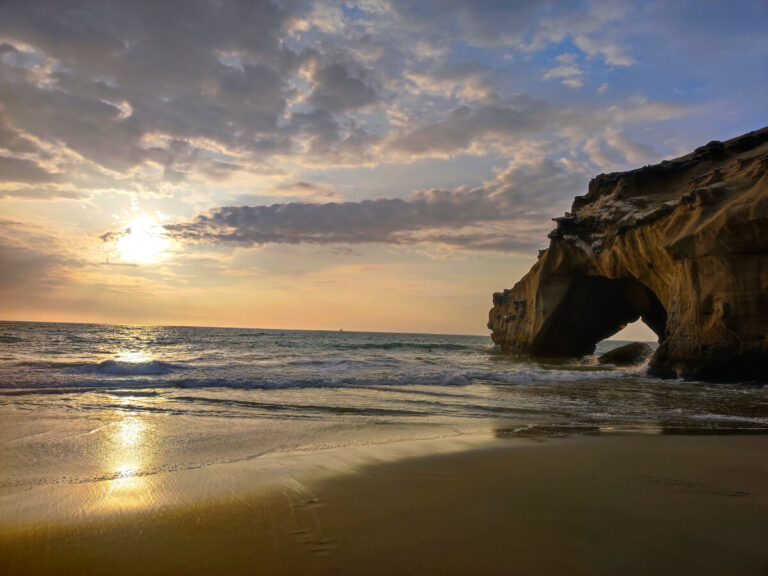
My recommendations
During my stay in Lobitos, I stayed in two places. The first one was the El Cuartel Hostel in Piscinas. It’s a good option for those on a budget; they have a kitchen available and a shared dorm with five bunk beds.
After a few days in El Cuartel, I decided to stay closer to the beach and have a bit of privacy, so I went to Casa Lobos. There’s a kitchen available, and I loved the people’s vibes. Another advantage was that Casa Lobos is in front of Punta Beach and on the right side of Jhonny Surf School.
Jhonny is an excellent surf instructor, I learned a lot from him during my surf classes. He also offers to rent surfboards and kayaks in this school. If you go there, tell him you got my recommendation, and he will be pleased.
Conclusion
This article brought a bit of history and facts about Lobitos in Peru. The future looks promising for this town as the community shows great care and willingness to create sustainable practices and projects. There’s room for improvements in the infrastructure and access to some services. Some people would say this is also part of the magic in Lobitos.
I hope this article teaches you something new and motivates you to visit Lobitos in Peru. This town will always be there, waiting for you.
See you all on the next adventure!!!
Bye!!




